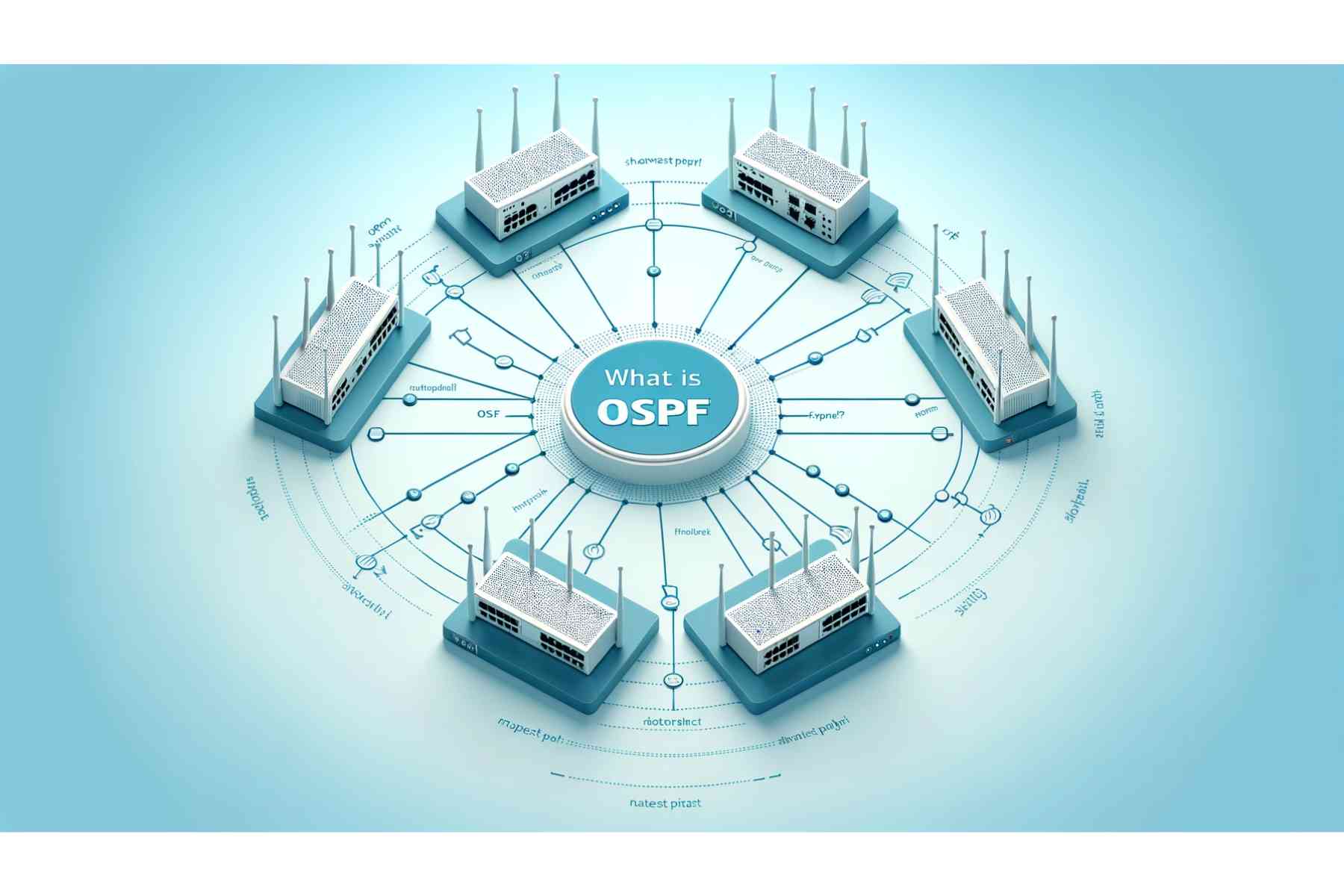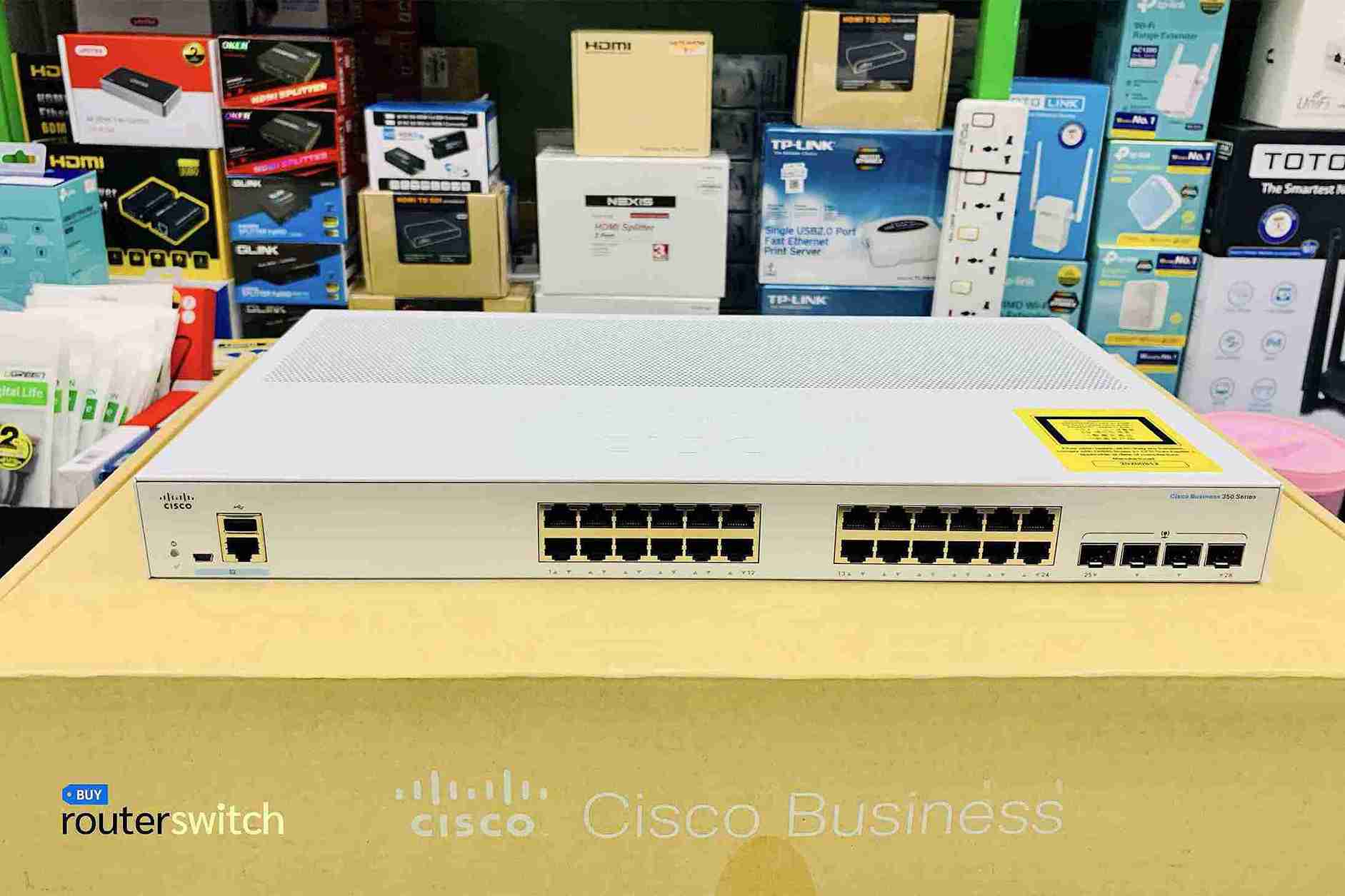Understanding OSPF: Comprehensive Guide to Open Shortest Path First Protocol
Table of content
Introduction:
Looking for scalability, convergence speed, and link-state routing but not finding an answer. We have got you covered. In this blog, we will discuss OSPF or Open Shortest-Path First. It provides you with scalability, convergence speed, and a bunch of other features that are soon to be discussed. It is a link-state routing protocol that utilizes the Dijkstra algorithm (a simple way to alleviate shortest path issues) to find the shortest path for data routing. Using mathematical calculations, it determines the best track between the source and the destination of data packets. Besides, it is worth-noting that an OSPF mainly operates in a single autonomous system (AS).
If you are interested in going deep, the present blog is meant for you. We have discussed each and everything about OSPF here.
What is OSPF (Open Shortest-Path First)?

OSPF, designed by the IETF (Internet Engineering Task Force), is a link-state routing protocol. It uses the Dijkstra algorithm to determine the best routing path for data to travel. It falls under the category of IGP (Interior Gateway Protocol) within the TCP/IP Protocol family. Additionally, OSPF is based on SPF technology and functions in a single autonomous system (AS).
In an Open Shortest-Path First network, routers and systems describe the topology of an area by maintaining an identical link-state database. It efficiently employs network bandwidth and guarantees scalability and convergence speed. It is worth noting that part of OSPF can be split into multiple networks that are connected. The topology of the area is only visible to the routers functioning in the same area.
How OSPF Works:
The fundamental working principle Open Shortest-Path First is division of network into areas. These areas are reasonable segmentation of routers and networks. In these segments, each area has a unique identifier (Router ID). Routers and networks with a particular area establish a network topology to share information with one another.
Basic Concepts Related To OSPF Functioning:
Router ID: It is a distinguished identifier for each router in the network.
Neighbor: In the network, a router that is directly connected to another network.
Adjacency: A link between two adjacent routers that exchange information.
LSA (Link-State Advertisement): A packet that is sent to its neighbors and has information about the link of that router.
Area: OSPF divides large networks into more manageable, smaller segments known as areas. All other areas are connected by the core area (Area 0).
Hello Protocol: To ensure that routers are aware of one another, it employs Hello packets to enable and maintain neighbor relationships.
Cost: In order to recognize the most effective path for data to travel, OSPF calculate the cost of each route based on bandwidth.
Backup Designated Router (BDR) and Designated Router (DR): In multi-access networks, BDR and DR are chosen to guarantee effective routing and reduce OSPF traffic.
Routing Table: To assist routers in making wise routing decisions, Open Shortest-Path First develops and updates a routing table using data from LSAs.
Do You Need OSPF?
Why do people go for OSPF? There was a time when IGP was the most used RIP (Routing Information Protocol). But then, there emerges an advanced routing protocol we know as OSPF. RIP had slow convergence, routing loops, and unsatisfactory scalability. Therefore, it replaced RIP by providing the three qualities at once.
Not only this, it brought multiple other features like multicast packet transmission, CIDR (Support for Classless Inter-Domain Routing), load balancing among equal-cost routers, and packet authentication. Besides, it comes with a hierarchal design that limits the routing updates by reducing table size. Furthermore, its route summarization capabilities reduce the amount of information. Lastly, being an open standard, it ensures interoperability between different vendors’ network equipment.
Features and Advantages of OSPF:
Features of Open Shortest-Path First:
- It is an inner gateway protocol (IGP) and an open standard routing protocol.
- Operates in an autonomous system (AS), which is a single routing domain.
- To streamline administration and optimize network traffic, it makes use of an idea known as regions.
- To find the shortest path to each destination, it applies the Dijkstra algorithm.
- It uses IP protocol for operation, but it encapsulates its data using no transport protocol (like TCP or UDP).
- Uses protocol number 89 IP packets to natively encapsulate its data.
- Makes use of an internal error detection and correction system.
- It is very adaptable, scalable, and flexible.
- Hop counts are infinite.
- It is VLSM/CIDR compatible.
- Multi-vendor deployment is supported.
- Less traffic is generated by routing updates.
Advantages of Open Shortest-Path First:
- The protocol is an open standard. Most routers can run it.
- It provides a loop-free topology by utilizing the SPF method.
- To achieve quick convergence, it makes use of both trigger updates and incremental updates.
- It is compatible with route summarization and VLSM in hierarchical designs.
- It is compatible with both IP protocol versions. IPv4 is supported by OSPFv2 and IPv6 by OSPFv3.
- It allows load balancing for the same destination using equal-cost paths.
- Networks of all sizes are supported.
How To Configure OSPF on a Cisco Router:
Here are the quickest steps to configure OSPF on a Cisco router:
- Enter Global Configuration Mode.
- Enable OSPF Routing Process.
- Assign OSPF to Network Interfaces.
- Set the Router ID (optional but recommended).
- Exit Configuration Mode.
Common Examples of Configuration:
- Enable OSPF.
- Assign OSPF to Interfaces.
- Set Router ID.
- Save Configuration.
And here, you have completed configuring Open Shortest-Path First on a Cisco router.
3 Best OSPF Configuration Practices:
The following are recommended practices for configuring OSPF (Open Shortest Path First) to guarantee a reliable, secure, and effective network:
- Make Use of Significant Router IDs:
- Description: Give each router a meaningful ID that corresponds to its function or location in the network.
- Advantage: By making it simpler to identify and find routers in the network topology, this technique facilitates troubleshooting and network administration.
- Example:Give branch routers the naming convention 10.0.1.x and headquarters routers 10.0.0.x.
- Make Use of Consistent Area Numbers:
- Description: Number OSPF areas according to a logical and consistent system.
- Advantage: This method improves network configuration readability, streamlines network design, and makes troubleshooting easier.
- Example: Designate area 0 for the spine and area 1, 2,… for each of the remaining regions, grouping similar areas logically.
- Make use of authentication
- Description: Enable OSPF packet authentication.
- Advantage: By securing OSPF connections, this stops harmful routing information from entering the network from unapproved devices.
- Example: Secure OSPF neighbors using MD5 authentication.
Conclusion:
By considering Open Shortest Path First on your Cisco router or any other router, you can enjoy excellent convergence speed, scalability, and link-state routing simultaneously. In this blog, we have covered definitions, working principles, and configuring processes in simple words. Now, you can configure OSPF on your router to get the best-performing network in your enterprise. At the end, we encourage you to keep visiting to read about networking accessories like routers, switches, and more. If you are looking for these products at the coolest rates, hit us up at Buyrouterswitch
Frequently Asked Questions
What is OSPF used for?
Open Shortest-Path First is an IGP or Interior Gateway Protocol that distributes routing information within a single Autonomous System. It brings multiple features that include convergence speed, scalability, and inter-domain routing.
What are the different stages of OSPF?
A router experiences multiple state changes during OSPF adjacency formation before fully adjacent to its neighbor. Section 10.1 of the OSPF RFC 2328 defines certain states. Down, Attempt, Init, 2-Way, Exstart, Exchange, Loading, and Full are the states.
What is the difference between OSPF and BGP?
Large networks benefit greatly from BGP’s dynamic routing capabilities, whereas OSPF provides faster convergence and more effective path selection. Two of the most widely used dynamic routing protocols that are based on standards are Border Gateway Protocol (BGP) and Open Shortest Path First (OSPF).
Why is OSPF necessary?
Why OSPF Is Necessary The Routing Information Protocol (RIP) was the most used IGP prior to the introduction of OSPF. OSPF is progressively replacing RIP, a distance-vector routing protocol, because of RIP’s poor scalability, sluggish convergence, and propensity to create routing loops.




 Catalog
Catalog





















































































































 (800) 870-9487
(800) 870-9487